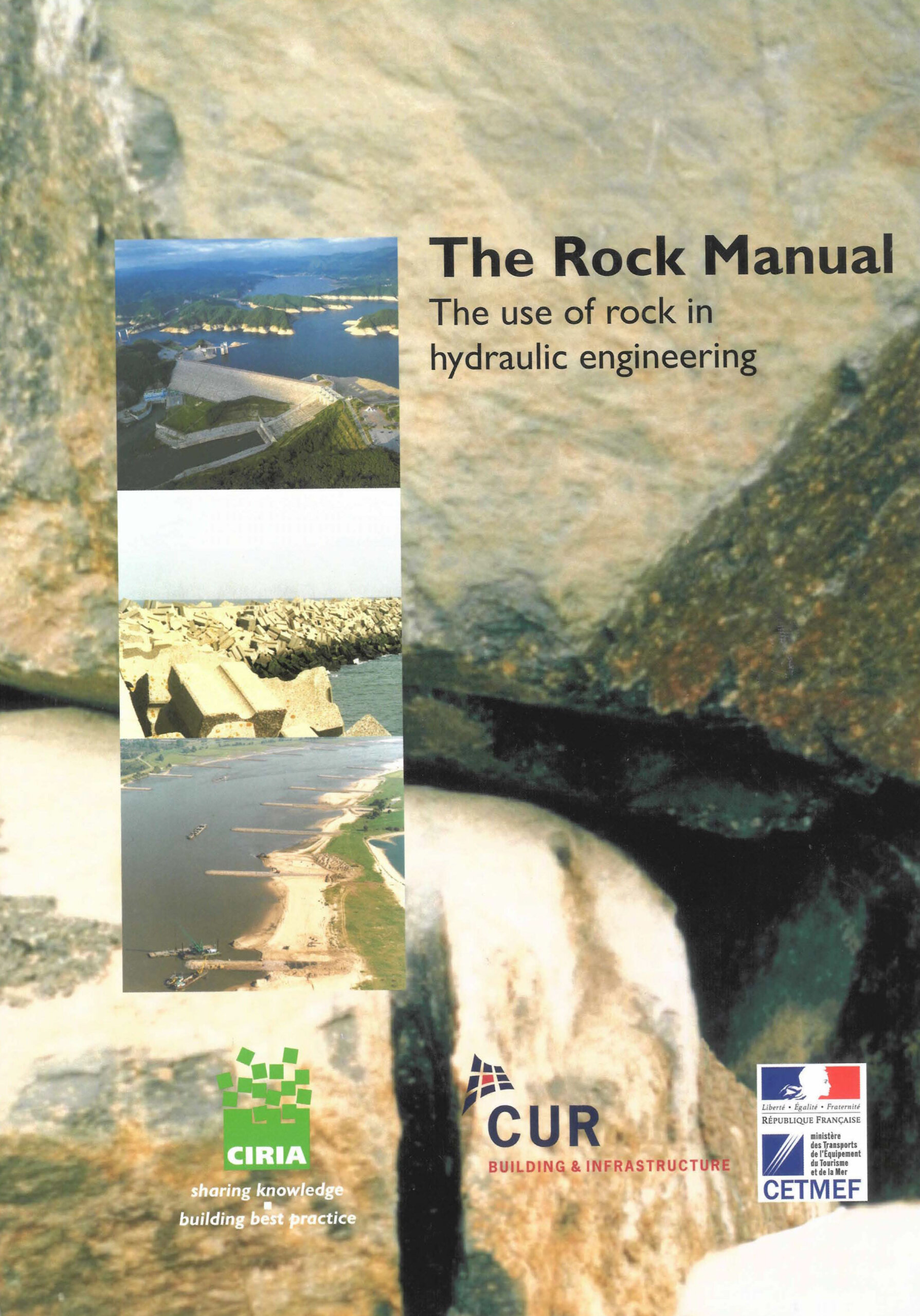Rock is a commonly used construction material in the hydraulic environment. It is used in the marine and fluvial environments to provide protection against scour and erosion and to limit wave overtopping and flooding.
Standard solutions do not generally exist in this field of engineering. To develop a robust, site-specific rock-based solution for a project it is necessary to consider a wide range of issues including materials, environmental conditions, construction methodology, maintenance regime and health and safety for construction personnel and the general public.The Rock Manual provides guidance that starts from the stage in a project when it has been decided to construct a structure in a hydraulic environment using rock as the only material, or as the primary material where it is one of a combination of materials.
The manual has benefited from extensive international review to ensure that it provides guidance on current good practice worldwide. The manual collates available research data and technical information together with practical experience gained by practitioners. In doing this, care has been taken to indicate current limitations in the design processes and the extent to which empirical methods and engineering judgement are involved.
The target audience for the manual is wide and includes planners, developers, engineering consultants and designers, architects, building managers, facility managers, contractors, producers and suppliers, owners, staff from regulators, funders and educational institutions, The guidance is suitable for worldwide application.
The book has been updated to include the use of rock in dams, fluvial engineering and construction. New information incorporated in this edition includes:
- extended scope of the manual (from the 1991 edition) to cover coastal, inland waterway and closure structures
- guidance on design and construction using concrete armour units
- updated guidance on armourstone specification and model construction specification for rock structures
- cross-referencing to the new European armourstone specification EN 13383, which supersedes sections of the previous manuals
- extensive cross-referencing to the Eurocodes for geotechnical considerations
- new research on block integrity, packing and placement, predicting quarry yield and block size distributions
- a new risk assessment template
- updated guidance on wave overtopping, wave run-up and wave transmission
- updated guidance on wave climate description and representative wave parameters including wave height distribution in shallow waters
- updated guidance on the selection of hydraulic design conditions, including design with joint probabilities of, for example, waves and water levels
- updated guidance on river hydraulics and design conditions for river structures
- updated guidance on the performance of falling aprons
- updated guidance on stability of low-crested structures, toe protection to vertical breakwaters, calculating wave forces on crown elements and on the stability of rockarmoured slopes with shallow foreshores
- new guidance on rear-side stability of rock structures, on the stability of near-bed rockfill structures, on design and construction of statically stable berm breakwaters and on the structural response to ice loads
- a new section on design of rock protection works in ports
- a completely revised chapter on monitoring, inspection, maintenance and repair.
More than 100 experts from Europe and across the world have been involved in the project to update The Rock Manual, ensuring the updated edition will retain its place as the number one reference guide worldwide for the use of rock in hydraulic engineering. This updated manual is a revision on the publications Manual on the use of rock in coastal and shoreline engineering (CIRIA, CUR, 1991) en C169 Manual on the use of rock in hydraulic engineering (CUR, RWS, 1995).



